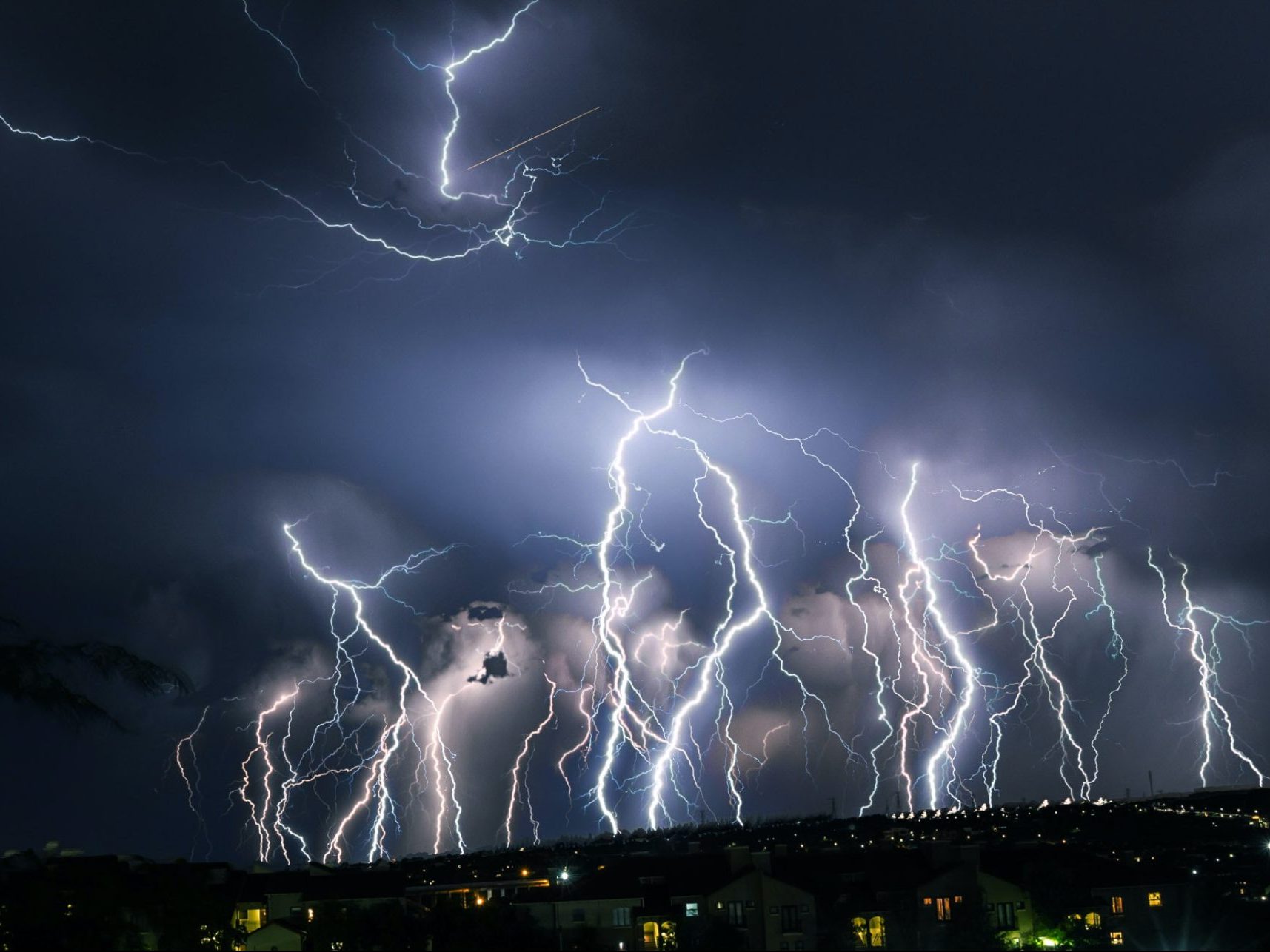Over the past 50 years, weather-related natural disasters have increased by a factor of five. Droughts, heavy flooding, wildfires and heat waves plague regions that are unprepared for the disasters, often leaving vulnerable populations at even greater disadvantages. According to a report by the World Meteorological Organization, from 1970 to 2019 there were more than 11,000 reported extreme weather hazards around the world, averaging one disaster (weather, climate or water hazard) for each day of the 50-year study.
Documenting around 115 deaths and a $202 million loss per day, the study fortells a bleak future ravaged by natural disasters. Of the total of over 2 million deaths, more than 91% occurred in developing countries, highlighting inequities in preparedness, recovery and the general economy when it comes to dealing with such hazards. And though scientists can use a combination of mathematics and meteorology to forecast events such as hurricanes, floods, earthquakes, landslides and wildfires, it is a complex process that can’t account for the human acceleration of natural disasters.
Storms and Floods
In March 2019, a cyclone claimed the lives of over 1,000 people living in southern Africa. Land and crops were destroyed, landslides ruined homes and infrastructure was demolished, devastating millions and leaving them destitute without basic services or food. Another cyclone tore through the same region less than six weeks later, leaving people crowding into shelters as their homes collapsed or were flooded. “Despair is evident,” a United Nations High Commissioner for Refugees release summarized, as the agency witnessed the immediate aftermath of the second cyclone.
In early 2022, powerful monsoon rains unleashed disastrous flooding across India, Nepal and Bangladesh, forcing 12 million people out of their homes. While the monsoon season typically follows a historic cycle of spread-out, moderate rain spells, newer seasons are seeing long dry periods interspersed with short, heavy rains instead. Both the heavier flooding and storms can be attributed to climate change.
Warmer sea surface temperatures intensify tropical storm wind speeds and increase precipitation. Warmer air also plays a role, holding more moisture and equaling more precipitation over the life of the storm. As sea surface temperature has increased steadily over the 20th century, rising about 16.5°F from 1901 to 2020, it’s only natural that the effect on storms and water-centered weather patterns worsens. Rising sea levels also add to the intensity of coastal storms, making them more damaging. Storm surges, the abnormal rising of water generated by a storm, caused the levees to fail during Hurricane Katrina, and storm surges also caused an extra $2 billion in damage to New York City after Hurricane Sandy hit in 2012.
Wildfires and Heat Waves
It’s not just wet conditions that are worsening with climate change. Following its hottest year on record, Australia was struck by devastating wildfires at the start of 2020. Soon after, The New York Times published an article in which researchers confirmed that “human-caused climate change had an impact” in making the high fire-risk conditions at least “30 percent more likely than in a world without global warming.” Higher concentrations of greenhouse gasses from burning fossil fuels, agricultural activities and deforestation produce excess atmospheric heat, which had a hand in heating up and drying out the Australian brush just before the wildfires broke out.
Burning through over 10 million hectares (~24.7 million acres) and killing at least 28 people, the wildfires have decimated entire communities, laid waste to thousands of homes and blanketed the sky with hazardous smoke haze. The fires have also been declared among the “worst wildlife disasters in modern history” after nearly 3 billion animals were estimated to have been affected by the blaze over the eight months of destruction. Such a loss of healthy wildlife and ecosystems is only one of the tragedies caused by climate change; human activity, one of the very causes, is also hampered by rising temperatures.
Nine out of 10 of the hottest days ever recorded in the UK have occurred since 1990. Though the hottest temperature for the UK, 104.5°F (40.3°C) on July 19, 2022, was still less than the world record highest air temperature of 134°F (Death Valley, CA, July 10, 1913), the country was completely unprepared. Stress-testing for steel train lines limited to a 27°C upper limit meant that when 40.3°C hit, the train lines expanded and buckled under the extreme heat. Hundreds of thousands of new homes built over the last few years were not built to be resilient in high temperatures, offering no solace for residents during the heatwave. Broadstone Road in Stockport, England, was “turned into sticky, black goo as the heat liquefied the surface.” The significant disruption to the UK would have been 2°C – 4°C (3.6°F – 7.2°F) cooler “without human-caused climate change,” experts said, predicting more heatwaves, fires and droughts for the coming years.
Conclusion
To be able to call such a period of disruptive heat a rare event, “The UK must reach net zero ‘very soon,’” Dr. Friederike Otto, leader of the World Weather Attribution group, told BBC News. With every fraction of a degree worsening climate conditions, there is no way to know what human activity to attribute any one natural disaster to. Despite this, a collective effort to decrease greenhouse gas emissions and reduce harmful practices like deforestation would surely help reduce the effects. Can people prevent natural disasters? No. But action could be taken to reduce the worldwide carbon footprint, and thereby reduce climate change and worsening natural disasters.
Unfortunately, the actions that could reduce the human impact on our climate are not being taken quickly or seriously enough. The World Bank estimates that the effects of climate change could push an additional 100 million people below the poverty line by 2030, a significant addition to the already immense population of 26 million pushed into poverty a year. Beyond the obvious, environmental and atmospheric changes are humanitarian issues. Loss and recovery costs of extreme weather impacts, the displacement of millions of people, food and water security issues and worsened global health — all stem from natural disasters accelerated by man-made climate change. While preventing such catastrophes is impossible, we can take preventative measures to reduce their impact.

















